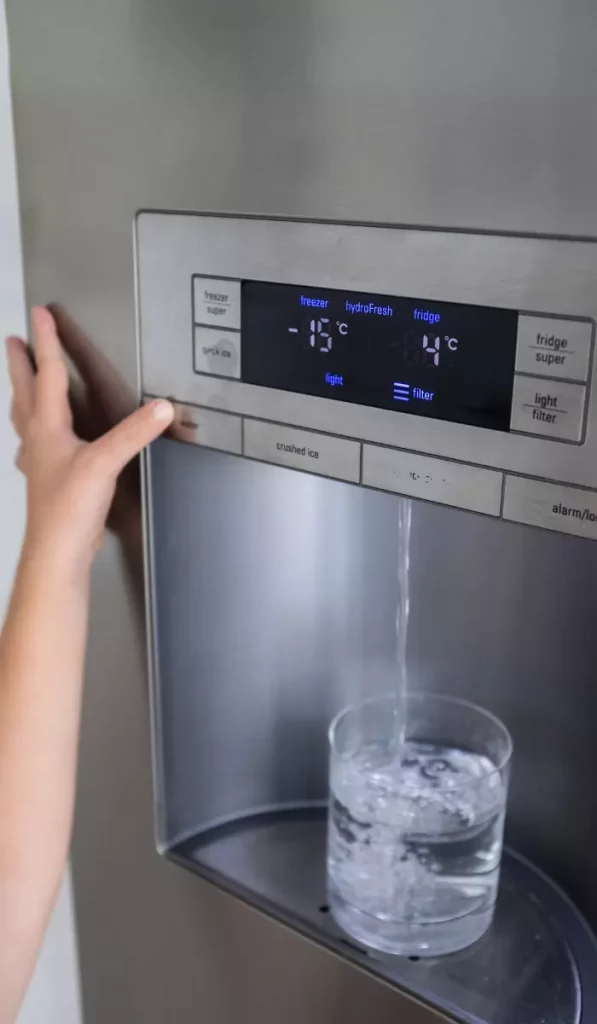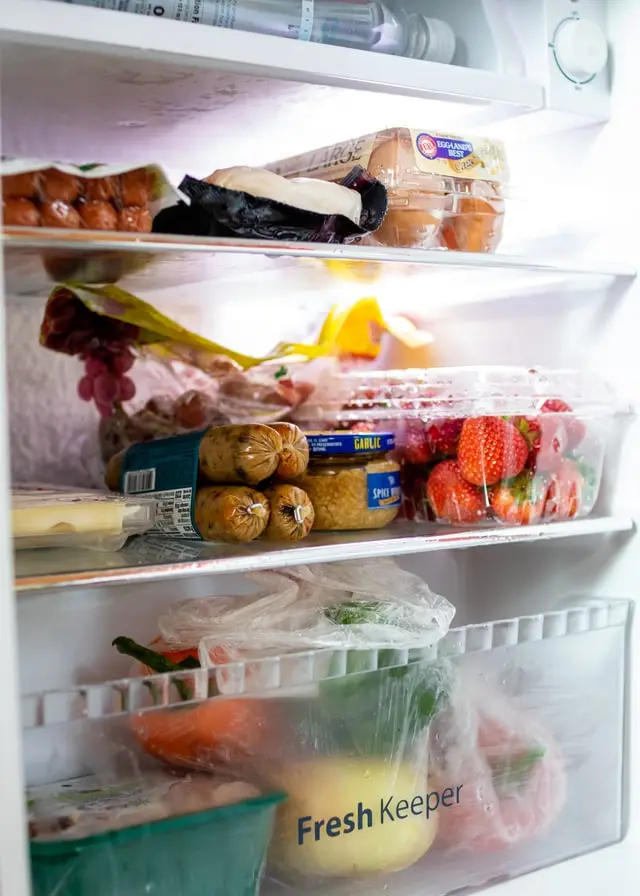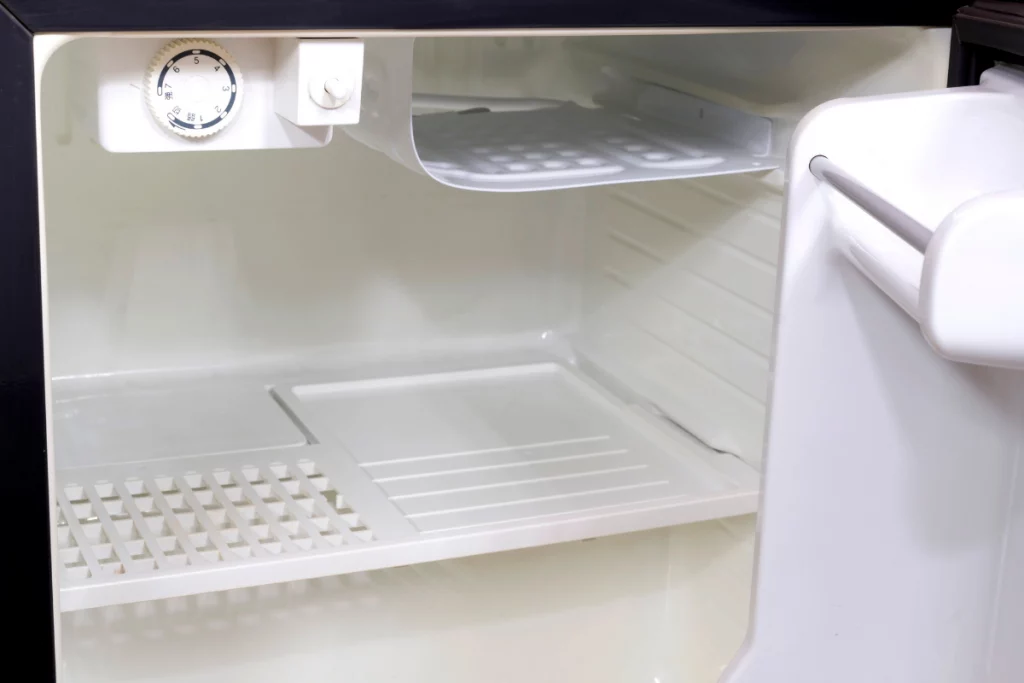The mini-fridge has become a staple in modern living, whether it’s in dorm rooms, offices, or tucked away in your man-cave for game nights. Among the various brands available, the Igloo Mini Fridge stands out with its exceptional features and trusted performance. But, as with any appliance, knowing how to optimize its functions can make a world of difference. One of the most frequent questions about the Igloo Mini Fridge is its temperature settings. Let’s delve into what each number means and how to use them effectively.

Table of Contents
Igloo Mini Fridge Temperature Settings 1-7: What Each Setting Means
Igloo Mini Fridges come with a dial that provides numbered settings. It’s crucial to understand that these numbers don’t correspond to specific temperatures in degrees but are rather indicative of relative cooling intensities.
- Setting 1: It’s the warmest of the settings. While it doesn’t provide intense cooling, it’s perfect for foods and beverages that you prefer just slightly chilled.
- Setting 7: This is where your fridge rolls up its sleeves and works at its maximum. Be prepared for icy cold beverages and perfectly preserved perishables.
- Settings 2-6: These middle players offer a gradient of cooling levels catering to diverse needs.
Optimal Settings for Everyday Use
For the average user, the mid-range settings, particularly around 4 or 5, offer optimal cooling. Here’s why:
- Energy Efficiency: These settings cool effectively without skyrocketing your energy bill.
- Versatility: Suitable for a variety of products from dairy, cooked meals to most beverages.
- Consistency: Provides a stable temperature that’s not too cold to freeze items unintentionally or too warm to spoil them.
When to Use the Lower Settings (1-3)
The lowest settings on your Igloo Mini Fridge serve more purpose than just energy conservation:
- Avoid Overcooling: Certain fruits, like bananas and tomatoes, can lose flavor or texture when cooled excessively.
- Wine Storage: Setting 2 or 3 is often ideal for storing certain wines that require just a slight chill.
- Bread and Pastries: Keep baked goods from drying out by using these gentler settings.
Mid-Range Settings (4-6): The Common Ground
The beauty of the mid-range settings lies in their adaptability:
- Daily Groceries: From dairy products to fresh fruits and leftovers, these settings ensure freshness.
- Beverage Bliss: Whether it’s soda, juice, or that craft beer, mid-settings chill them to perfection.
- Safety: These settings are cold enough to keep most bacteria at bay, ensuring your food remains safe to consume.
Higher Settings (7-8) and Their Uses
For those who love their drinks almost frosty or need to store perishables for longer:
- Meat Storage: Higher settings ensure meats, especially seafood, remain fresh and bacteria-free.
- Hot Summers: On sweltering days, crank up the dial to keep everything super cool.
- Quick Chill: Need to cool something in a jiffy? The higher settings are your go-to.

Adjusting for Seasons and External Temperatures
It’s fascinating how appliances, much like us, respond to the world around them. Just as we adjust our clothing based on the season, our mini fridge requires adjustments based on ambient temperatures to operate optimally. The surroundings can have a pronounced influence on how your Igloo Mini Fridge performs, affecting not just its efficiency but also the quality of the food and drinks inside.
Winter Adjustments:
Winter brings with it a chill that can have significant effects on appliances. As the world around us cools, so does the environment of our homes.
- Turn Down the Dial: With colder external temperatures, your fridge doesn’t have to work as hard to maintain its internal coolness. This means you can afford to turn down the dial, saving energy and reducing wear on the fridge’s compressor.
- Avoid Windows: If your fridge is near a window, remember that during the winter, these spaces can get particularly cold. This could make the fridge too cold if it’s on a higher setting, leading to accidental freezing of items inside.
- Monitor Food and Beverages: Items, especially liquids, can freeze and expand, leading to potential spills or breakages. Regularly checking the state of stored items can help avoid these mishaps.
Summer Strategies:
Summer’s scorching temperatures and increased humidity levels can pose a challenge. Your mini fridge works harder during these months, and here’s how you can help:
- Increase the Setting: As external temperatures rise, your fridge’s compressor has to work overtime to maintain its cool interior. Upping the temperature setting ensures your stored items remain fresh and beverages stay chilled.
- Be Wary of Direct Sunlight: If your mini fridge is near a window or any source of direct sunlight, it could become a mini oven instead. Ensure it’s placed in a shaded area, away from direct heat sources.
- Ventilation is Key: Make sure there’s sufficient space around your fridge, especially at the back where the coils are. This ensures better airflow and helps the appliance dissipate heat efficiently.
Fall Strategies:
As the leaves change color and a cool crispness fills the air, Fall signals the beginning of cooler days ahead. Here’s what you should do:
- Moderate the Dial: Fall doesn’t possess winter’s intense cold or summer’s blistering heat. Therefore, your fridge settings can be moderately cool, often hovering around the mid-range.
- Watch Out for Humidity: Fall can bring increased humidity, which can influence your fridge’s efficiency. Ensure the door seal is intact to prevent moisture from creeping in.
- Prepare for Variances: Fall can have warmer days interspersed with sudden cold spells. Regularly checking the internal temperature can help you navigate these fluctuations without much hassle.
Spring Strategies:
Spring is the season of rejuvenation, with blossoming flowers and gradually warming temperatures. While delightful, it demands distinct considerations for your mini fridge:
- Slowly Turn Up the Dial: As the external temperatures begin to rise, it’s wise to incrementally increase the fridge’s settings to maintain optimal internal coolness.
- Mind the Melting: If you’ve stored frozen items over the winter, keep an eye on them. As you adjust the temperature for spring, ensure these items don’t thaw unexpectedly.
- Ventilate and Clean: Spring cleaning isn’t just for your home! With the warming weather, ensure your fridge’s vents are clear and its interior is clean. This not only improves efficiency but also readies your appliance for the upcoming summer.

Tips for Optimizing Your Fridge’s Efficiency
- Location Matters: Ensure your fridge isn’t near heat sources like ovens or direct sunlight.
- Keep It Full, But Not Too Full: An almost empty fridge works harder to cool, but an overloaded one restricts airflow.
- Regular Cleaning: Clean the inside periodically to prevent ice build-up, which can affect performance.
Common Queries about Temperature Settings
- “My drinks aren’t cold enough at setting 4, why?”: Remember, contents and how often you open the fridge play a role. If you’re frequently accessing it, the temperature can fluctuate.
- “I’m going on vacation. Should I turn it off?”: If it’s for a short period, consider moving to a lower setting, but for extended periods, empty and turn it off to save energy.
Conclusion
Your Igloo Mini Fridge is more than just a compact cooling unit; it’s a versatile tool, adaptable to various needs. Understand its settings, adapt to the external environment, and ensure regular maintenance. With these insights, you’re set to maximize its potential and enjoy perfectly cooled snacks and beverages any time you desire.




